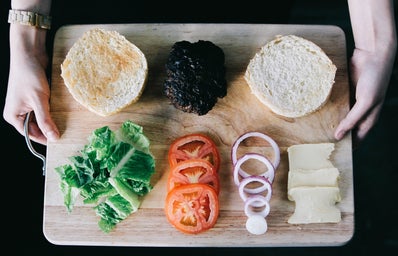Now that I (finally) live in a house with a kitchen, I get to cook for myself every day. Cooking is my “me time”. It’s my biggest form of self care and I look forward to trying new recipes to post on my food instagram.
The downside to cooking for myself is that I have to buy groceries every week. Boooooo. To make it worse, I lose control when I enter any grocery store. I always say my toxic trait is that I can’t stick to my shopping list.
When I first moved into my house, I spent nearly $100 per week on groceries. Given, the first few grocery runs were pricier than normal because I had to stock up on things that last a long time, like oils, spices, flour, etc., I still was buying way more food than I needed.
Spending $100 per week got old real fast, so I put myself on a budget of $50-$60 per week for groceries. Last week, I only spent $38 because I’m lowkey becoming an extreme couponer, but more on that later.
I never choose the cheapest brand on the shelf and I’m a sucker for cute packaging. I’m a Whole Foods rat. I like organic produce cage-free eggs and expensive cheese and good bread from bakeries and sustainably fished salmon and the Keurig cups that don’t pollute the planet. I value high-quality food, and it’s worth the splurge to me. Do you see how this became a problem when I first started budgeting?
The good news is that I have found a way to budget for these items– it all comes down to food waste. Think about how much food you throw away because it went bad or you made too much of it. You are throwing your money in the trash.
Below is a list of tips and tricks that I use to save money at the grocery store and eliminate food waste.
1. Be realistic about how much food you are going to eat this week. Be especially strategic about this when buying produce. Are you really going to eat seven bananas and five avocados before they all go brown? If something has a short shelf-life, only purchase a few portions at a time.
2. Make a grocery list and STICK TO IT. It’s easier said than done, but not impossible. If you absolutely NEED something that is not on your list and you can’t wait until next week, sacrifice an item of similar cost from your cart.
3. Look at your grocery store’s weekly ad to see what deals it has. As mentioned above, I am slowly evolving into being an extreme-couponer. While creating your shopping list, browse your grocery store’s weekly ad for deals and discounts.
4. Use your grocery store’s app, if it has one. Here in Lawrence, I typically buy my groceries from Sprouts. I use the Sprouts app to virtually add my whole shopping list to my cart so that I can see the cost estimation. Walmart has a similar function on its app and website. The Sprouts app has been instrumental helping me stick to my list, which saves money in the long run.
5. Freeze fruit and veggies that are about to go bad. You will find a use for them in the future– trust me! Frozen produce lasts for months in the freezer and is perfect for smoothies or steamed veggies.
6. One thing of cheese at a time. I have this rule for multiple reasons:
-
Cheese is expensive.
-
I’m trying to eat less cheese because it hurts my stomach.
Maybe you’re not trying to eat less cheese. That’s totally fine and I envy your tolerance to lactose. Regardless, cheese is sneaky, and if you buy, say, three cheeses to your cart during one grocery run, that can amount to $15 of your grocery bill.
7. Do not buy chips, soda or snacky-junk food. Okay, just don’t buy too much of it. I say this because chips and pretzels and cookies and popcorn won’t keep you full, but they will run up your grocery bill. Opt for functional, protein-packed snacks, or do what I do and learn to use leftovers as a snack. This is also a good way to cut empty calories and sugar from your diet.
7. Buy less meat. I could go on and on about the benefits of consuming less meat and animal products, but I’ll save that for another article. At the end of the day, meat is likely one of the most expensive items in your cart, and there are cheaper ways to consume protein.



